Electrical Wire Color Code in Singapore: A Comprehensive Guide
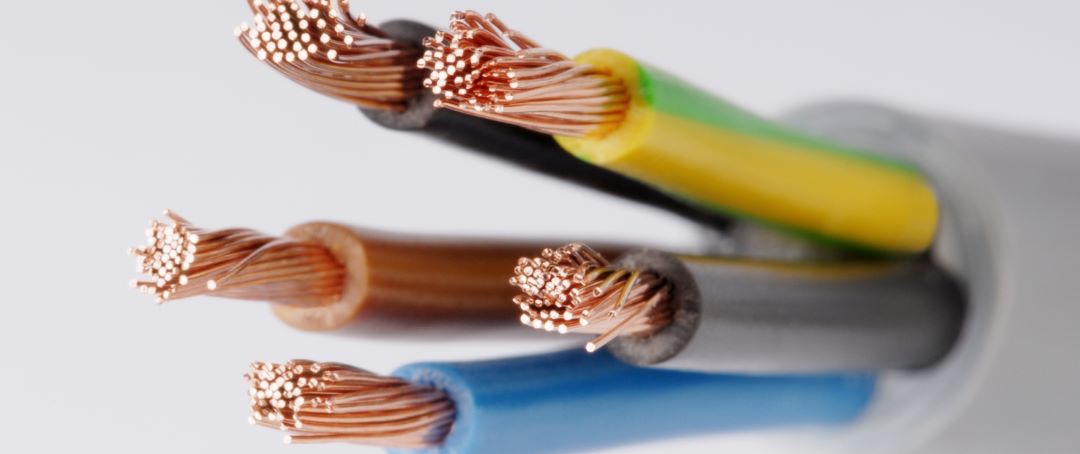
Understanding the electrical wire colour code in Singapore is fundamental for ensuring the safety and efficiency of any electrical installation. This guide breaks down the essential colour codes used for identifying different types of wires, necessary for anyone involved in installing or maintaining electrical wiring. If you are interested in doing house wiring yourself, check out the fatal wiring mistakes everyone should avoid.
The wiring colour codes include the blue wire as the neutral wire colour, the green/ yellow wire as the earth wire colour, and the brown wire signifying the live wire. Additionally, other electrical wiring colours used in different contexts, such as the red wire typically indicating a connection to a circuit breaker or another type of power source.
Adherence to these standard colours not only facilitates the safe installation for electrical appliance but also aids in troubleshooting and repairs such as how to fix light switch button, thus ensuring a safer environment for both professionals and homeowners.
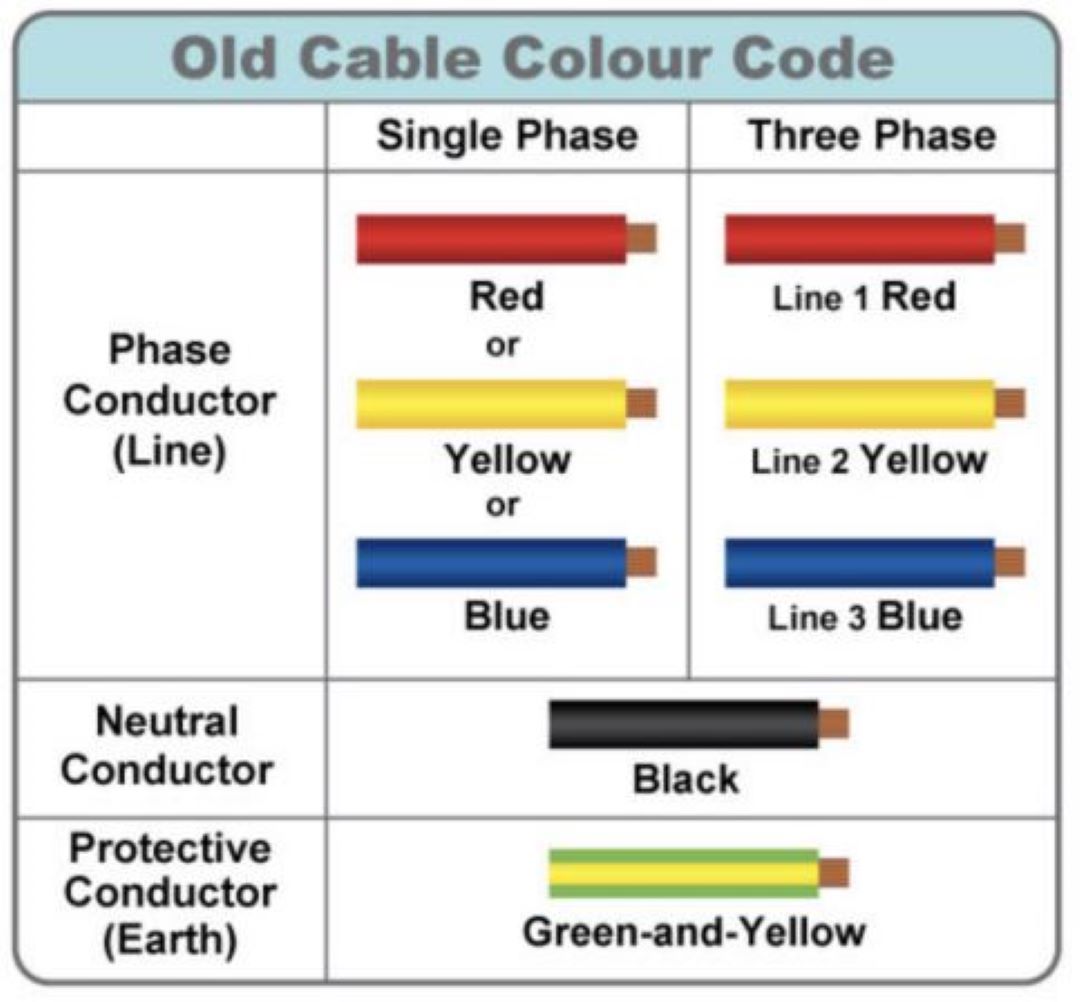
What is the colour code for old electrical wires in Singapore?
In Singapore, the colour code for old electrical wires is red for the live wire, black or blue for the neutral wire and green/ yellow for the earth wires. For 3 phase cables, the old cable colour code for live wires, namely L1, L2 and L3 follow a colour code of red, yellow, and blue, respectively. The neutral wire color is black or blue. Lastly, the earth wire colour uses stripped green/ yellow.
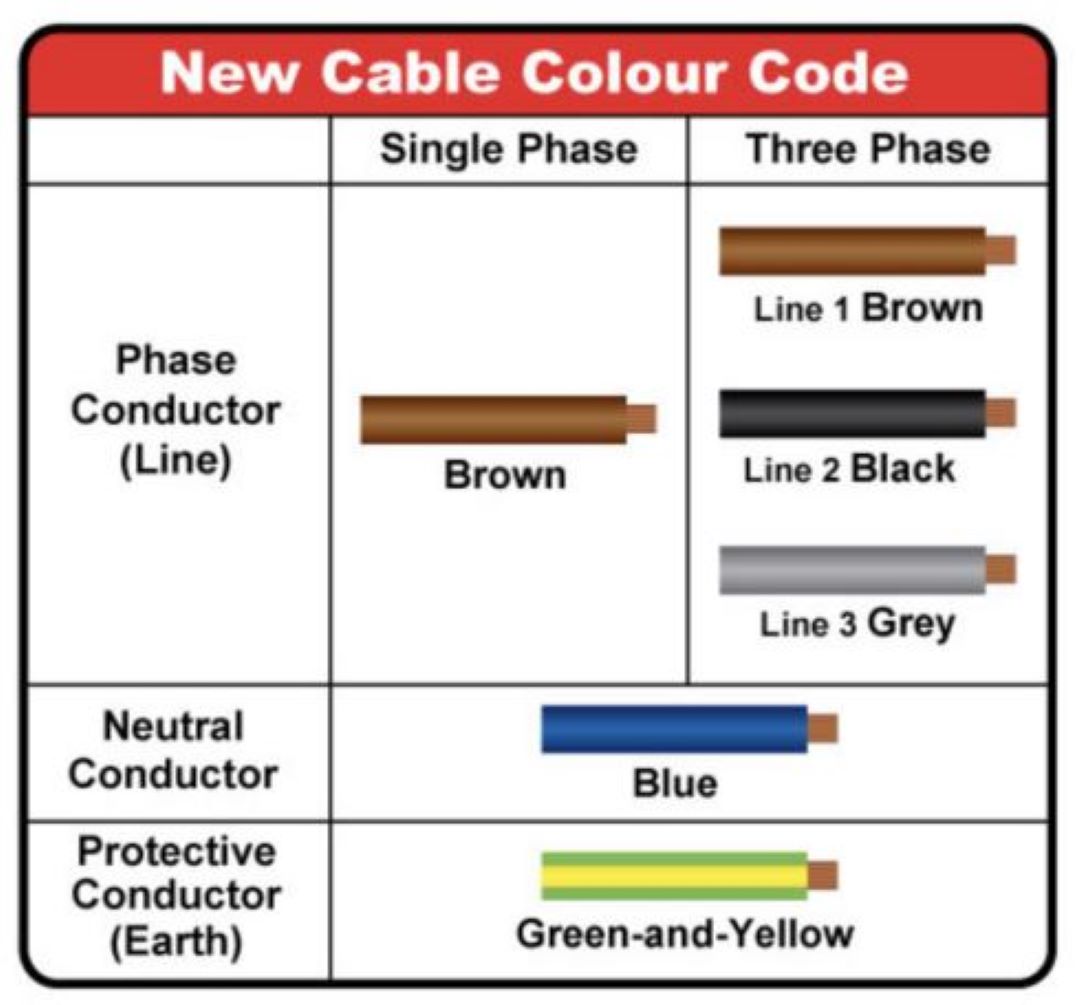
What is the colour code for DC cable in Singapore?
In Singapore, the colour code for DC cable is brown for the live wire, blue for the neutral wire and green/ yellow for the earth wires. This is referred to the new colour code for single phase cables.
For 3 phase wiring, the colour codes are distinct to ensure proper phase rotation and easy identification during electrical installation or maintenance. The 3 phase wires consists of a L1, L2 and L3 wire. The L1, L2, and L3 live wires follow a colour code of brown, black, and grey, respectively. This color coding is crucial in the electrical industry for the safe installation of circuit breakers, AC power systems, and electrical appliances, ensuring that the earth wire (green or bare wire) is correctly connected to prevent electrical shocks.
The wiring colour codes in Singapore align with international standards to accommodate electrical appliances from different countries, making it easier to identify the live (brown wire for L1, black wire for L2, grey wire for L3), neutral (blue wire), and earth wires (bare or green/yellow wire) during installation or troubleshooting. This standardization aids in avoiding confusion and ensuring the safety of both the electrical workforce and household users, reinforcing the importance of adherence to these colour codes in wiring practices across the electrical industry.

What is the electrical wiring color code standards in Singapore?
In Singapore, the electrical wiring color code standards are detailed and specific, catering to the safety and clarity of electrical systems. These standards specify the electrical wire colour code for different types of wires, such as the neutral wire, earth wire, and live wire, ensuring that electrical wiring colours are universally understood.
For live wires, the color brown is typically used, while the neutral wire adopts a blue coloring and the earth wire is distinguished by a green-yellow combination. This guide to electrical wire color codes plays a crucial role in preventing accidents and facilitating easy maintenance. Prior to any electrical installations, we highly recommend you to refer to Singapore's new colour code which explains the latest Electrical Wiring Color Code Standards in PDF form.
Comparatively, in the USA, the wire color code also follows a distinct pattern with similar safety objectives in mind. For instance, in American wiring systems, a white or gray wire serves as the neutral wire, while the earth (ground) wire is either bare or green. The live wires may come in various colors including black, red, blue, and sometimes orange or yellow when a yellow stripe is present.
Electrical wiring color codes vary slightly between countries to reflect local practices and safety standards, but the underlying principles of clear colour codes remain consistent. This meticulously followed colour code system simplifies electrical installations and maintenance, ensuring that electrical wires such as live, neutral, and earth are easily identifiable, which in turn enhances safety and efficiency in electrical systems and AC branch circuits.
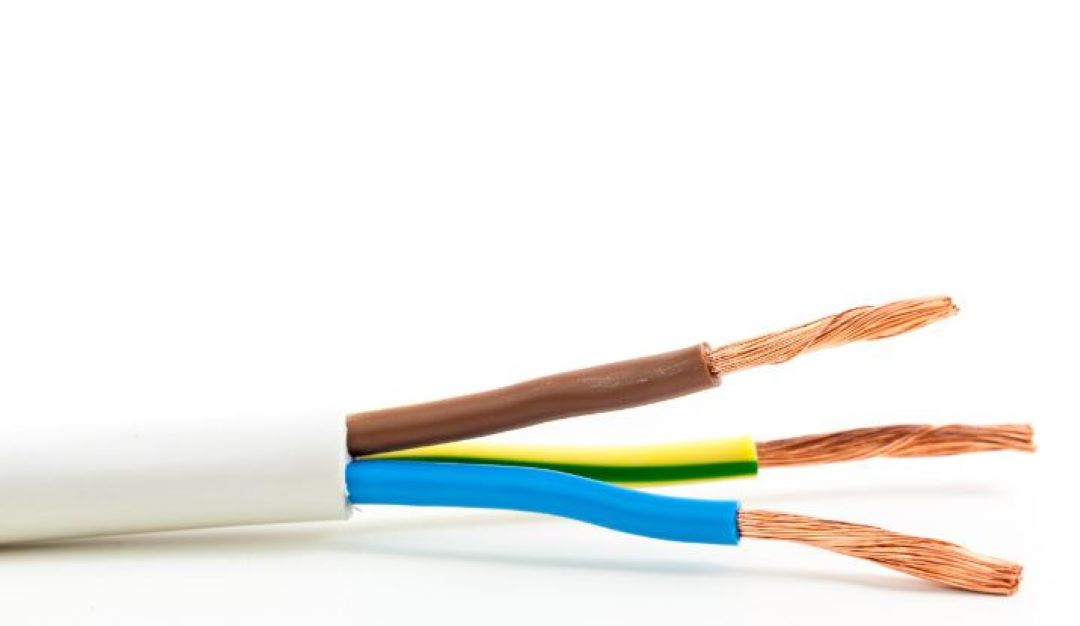
What is the colour code for wires in Singapore?
In Singapore, the colour code for wires is distinctively categorized to ensure safety and compliance for both single phase and three phase power supply systems. For single-phase wiring, the live wire is coded brown, and the neutral wire is coded light blue.
In contrast, for three-phase power supply systems, the wires are color-coded as brown for L1, black for L2, and grey for L3, with the neutral wire continuing to be light blue. These color codes are crucial in identifying the different cables in electrical installations and help in maintaining consistency, reducing the chance of errors in wiring - all integral to the electrical wire colour code standards adopted in the country.
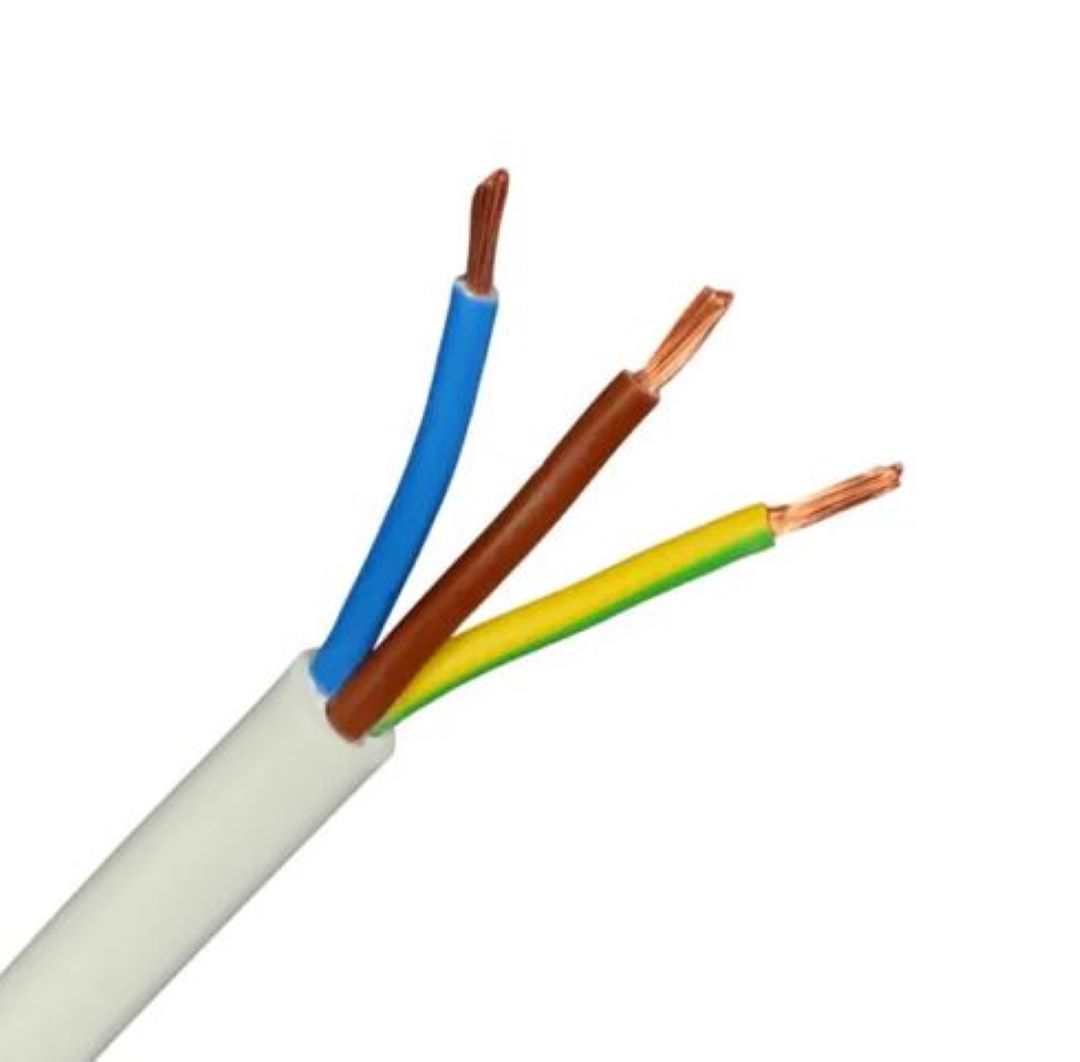
How do I know if my wire is L or N?
To know if your wire is L or N, you should closely examine the wiring colors used in your infrastructure, as these are critical indicators of the functionality of each wire. Typically, the neutral wire (N) is distinguished by a blue color, while the live wire (L) can be either brown, black, or grey, depending on the specific standards adopted.
This electrical wire colour code scheme helps avoid confusion and ensures safe electrical installations. In Singapore, like in many yellow countries, wiring colors are aligned with those recommended by the International Electrotechnical Commission, ensuring a standardized approach to identifying wire colors.
Are you experiencing frequent electrical problems even though your wires are connected correctly? Here are 20 signs that you need a wiring repair and replacement.
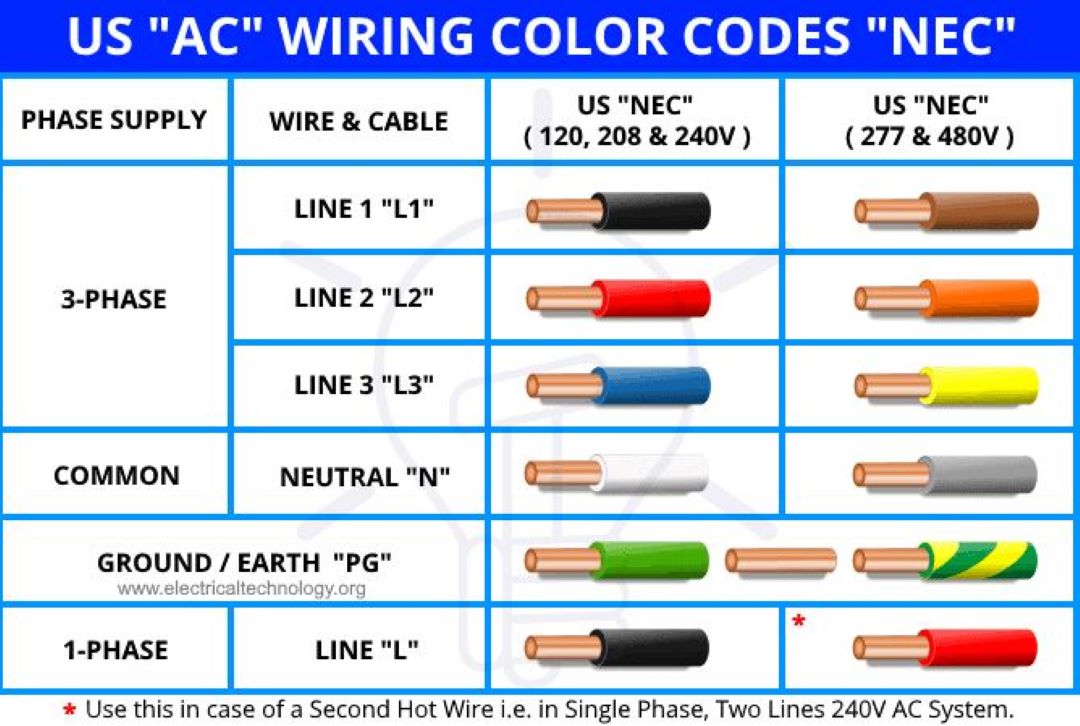
What is the National Electrical Code color coding wire?
The National Electrical Code (NEC) color coding wire is to outline specific color codes for electrical wiring to ensure safety and avoid confusion in installations.
According to the NEC, white (or grey) is designated for the neutral wire, while bare copper, green, or green with a yellow stripe is used for the protective earth wire.
This standardization allows for easy identification of the neutral and earth wires, thereby minimizing errors. For live wires, any color other than white, grey, or green may be used.
In 208 VAC (Volts Alternating Current) three-phase systems, the wires are typically black, red, and blue, while in 480 VAC systems, they are brown, orange, and yellow.
Conductors larger than #6 AWG, which are only manufactured in black, must have color tape applied at their ends to indicate their role, helping to distinguish them from other wires.
Overall, the NEC's guidelines are crucial for maintaining consistency in the US region's electrical installations, covering everything from wiring colors to the use of red wire in old wires, ensuring the safe operation of electrical appliances.